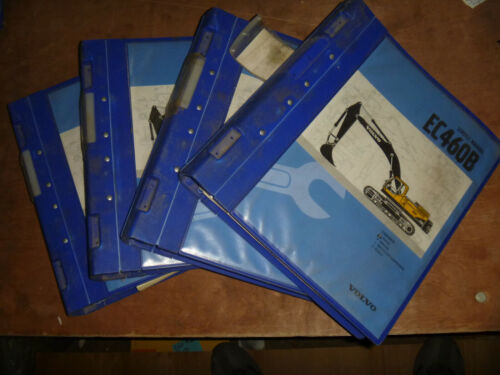Volvo CE- Construction Equipment
The Volvo Construction Equipment company was founded in the mid-1800s during the industrial revolution. This company is considered the pioneer of the Construction Equipment industry. Volvo CE is particularly known for its innovative articulated haulers and wheel loaders.
The production facilities of Volvo CE are almost all around the world in various countries, including South Korea, Russia, Brazil, Scotland, the US, Sweden, Germany, France, India, China, Scotland, and Poland. The company produces hydraulic excavators, wheel loaders, skid steers and backhoe loaders, as well as articulated haulers, motor graders, pavers, milling machines, asphalt compactors, and more.
Volvo CE’s machines come under different brands, including Terex Trucks, SDLG, and Volvo itself. Historic businesses such as Clark Forklifts and Euclid trucks have also become integral parts of the Volvo CE brand line.
The 19th Century
Johan Theofron Munktell Is the founder of Volvo CE. He started an engineering workshop in order to develop the local Mechanical industry. Along with Johan, two brothers, Jean and Carl Gerhard Bolinder, were also the founders of Volvo CE. The passion and dedication of these three founders is the reason why Volvo Construction is one of the most successful construction companies.
With the efforts of its founders, this company grew to a whole Manufacturing company of construction equipment after 1832. It was then in 1844 when Jean and Carl founded Kungsholmens Gjuteri & MaskinVerkstad in Stockholm, Sweden.
Later Sweden’s first steam locomotive was manufactured in 1853 by Munktell. Then in 1880, Bolinder participated in manufacturing the world’s first submarine. He also built Sweden’s very first combustion engine in 1893.

The 20th Century
The 20th century was overall a great time for Volvo as it produced a variety of different products, most of which turned out to be a great success. Sweden’s first tractor was made in 1913 by Munktell. The Volvo Service Manual of that tractor included everything on its specifications and how it should be maintained.
Mergers and Aquisitions
Bolinder and Munktell’s company merged in 1932 and formed AB Bolinder-Munktell. The Volvo CE moved a step forward in 1950 when they bought AB Bolinder-Munktell. After this, the company introduced its first wheel loader, called the H10, in 1954.
The company continued its struggle of experimenting with different machinery; it was in 1960 that the company expanded the line of wheel loaders with the acquisition of Arvika Thermaenius AB Arvika Verken. The ordinary tractor was simply turned to the front and placed the loader units over the wheels. This creates the possibility of higher breakout forces and heavier loads. There were some issues with that loader, but the company worked on the downsides and brought up a plan for a tractor without wheels having articulated steering.
Continued Growth
A few years later, the company introduced DR 631. It was the very first series with an articulated hauler having all-wheel drive.
Volvo continued to move upward on the stairs of success over the coming years. They purchased various companies from around the world to expand their business. In 1973, the company changed its name to Volvo BM.
The Volvo expanded to a whole new level. They did so by opening the products in 1985 in a very different way. The joint venture with Clark Equipment, which was an American Manufacturer. It was that time when they started producing excavators and a lineup of small machines.
Finally, Volvo BM changed its name to Volvo Construction Equipment. Veniam seemed apparently more meaningful to the company, which opened the door of success for them in the coming years.

Volvo CE in the 21st Century
The 21st century for Volvo CE up till now is an era of manufacturing innovative machinery and equipment. Those include Skid steer loaders produced in 2001, forklifts, milling equipment, and pavers in 2007.
Earlier in 2017, Volvo Construction Equipment brought EX2 in front of the world, which is a completely electric compact excavator. The power and force that this beast EX2 delivers are exactly the same as its counterpart. The battery of this excavator is enough to run it for eight hours. The efficiency of these excavators is ten times higher. What’s more? They are ten times less noisy.
This demonstrates that Volvo is not only determined to make innovative machinery and equipment but also remains fully concerned with environmental protection. Every new Volvo equipment of Volvo you see will be less noisy and must be protecting the natural environment in some way. Controllability, maneuverability, fuel efficiency, safety, and noise protection are the top priority of Volvo. They are doing extensive research and development to achieve what they want.
In many ways, Volvo today is the world’s leading construction equipment company, having a range of products with diverse specifications. They have produced an amazing excavator model range that has an excellent digging capacity. The excavators that Volvo produces are used in every part of the world, no matter what the weather conditions are. They can bear all sorts of hot and cold weather. Their high-quality products are the reason why they are popular all around the world.
Frequently Asked Questions about Volvo CE
What is Volvo’s biggest excavator?
Volvo’s Largest excavator is the EC950F. The EC950F boasts more than 603 HP and weighs more than 200,000 lbs.
What is the most popular excavator?
Caterpillar takes the #1 spot with the largest market share, followed by Volvo CE in #2.
What is the lifespan of an excavator?
The average lifespan for an excavator is 10,000 hours. With better maintenance, a machine may exceed that time.

